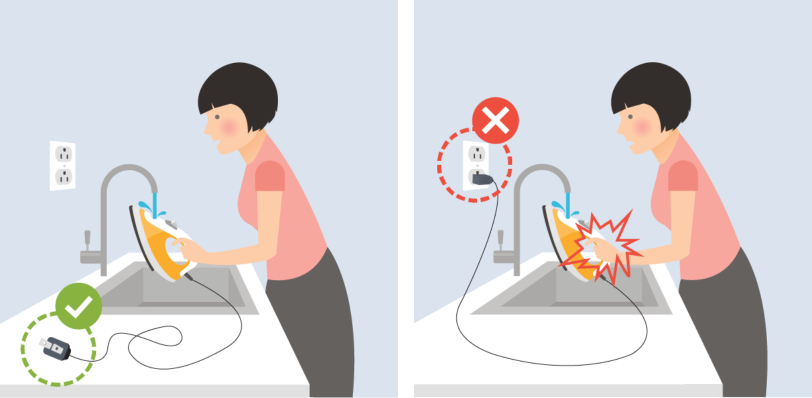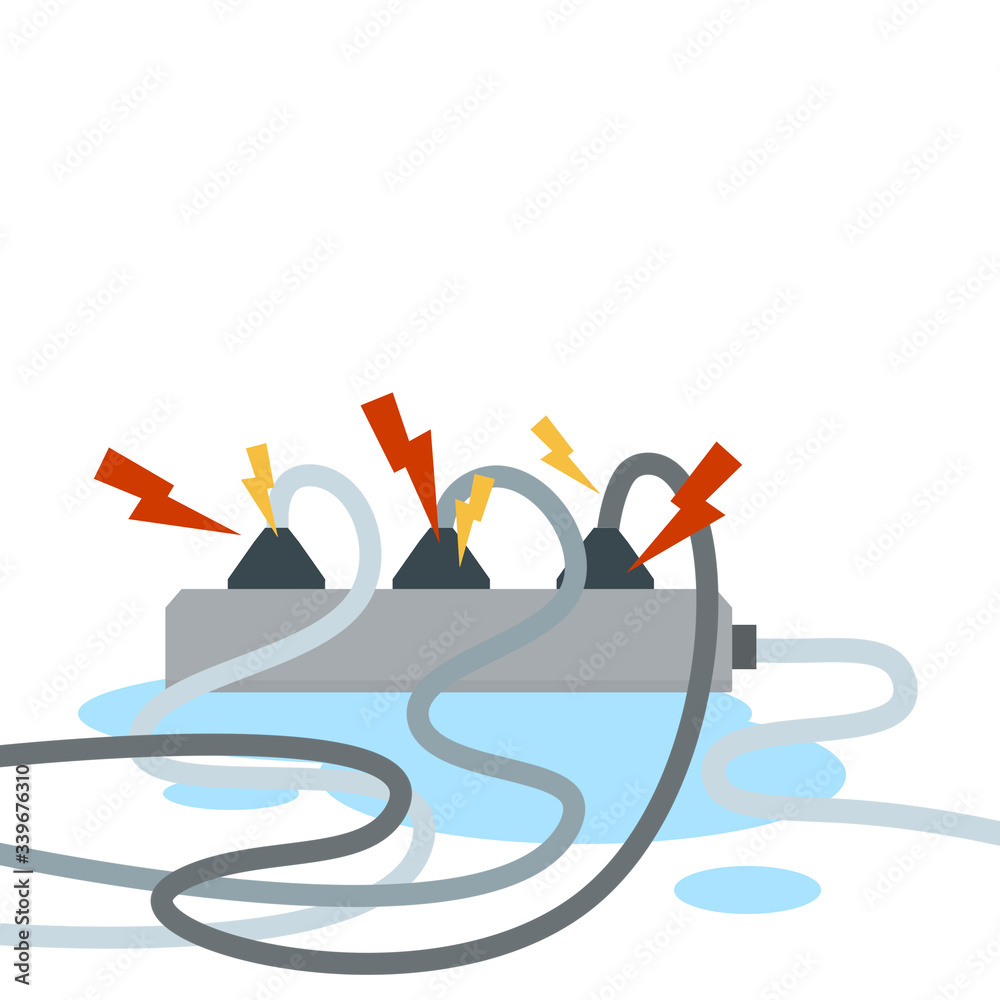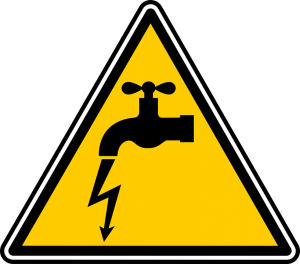Water and electricity create a deadly combination. Contact between them can cause severe injuries or fatalities.
Water is an excellent conductor of electricity, making it extremely dangerous in environments where both are present. Even a small amount of water can lead to electrical shock, short circuits, or fires. Common household situations, such as using electrical appliances near sinks or bathrooms, pose significant risks.
Awareness and caution are essential to prevent accidents. Always ensure electrical devices and outlets are dry and properly maintained. Install ground fault circuit interrupters (GFCIs) in areas prone to moisture. Education about the dangers of water and electricity can save lives and prevent property damage. Safety measures can mitigate risks, ensuring a safer living environment for everyone.

Credit: www.hydroquebec.com
Water’s Conductive Properties
Water is an excellent conductor of electricity. This fact makes it dangerous when mixed with electrical devices. Understanding how water conducts electricity can save lives and prevent accidents.
How Water Conducts Electricity
Pure water does not conduct electricity well. The impurities in water, such as salts and minerals, allow it to conduct electricity.
These impurities dissolve in water and form ions. These ions carry electric current, making water dangerous around electricity.
| Type of Water | Conductivity |
|---|---|
| Pure Water | Low |
| Tap Water | High |
| Salt Water | Very High |
Real-life Examples
Electric shocks in bathrooms are common. Water from showers or sinks can carry electric current from faulty wiring.
Swimming pools are another risk. Lights and pumps can be sources of electric shocks if not properly insulated.
- Flooded Basements: Water can seep into electrical outlets.
- Wet Hands: Touching appliances with wet hands can cause shocks.
- Outdoor Activities: Rain or wet ground increases the risk around electrical equipment.
Knowing these dangers can help you stay safe. Always handle electrical devices with dry hands. Avoid using them near water sources.

Credit: stock.adobe.com
Household Risks
Water and electricity are essential in homes. But they can be dangerous when combined. Understanding the risks can help prevent accidents.
Common Household Hazards
Many everyday situations can be hazardous. Here are some common dangers:
- Wet Hands and Electrical Appliances: Using appliances with wet hands can cause shocks.
- Bathrooms: Water can splash on electrical outlets and devices.
- Kitchen Sinks: Water near outlets can create risks.
- Flooded Basements: Water can reach electrical systems.
Prevention Tips
Preventing accidents is key. Follow these tips:
- Dry Hands: Always dry hands before using electrical devices.
- Use Outlet Covers: Protect outlets in wet areas.
- Check Appliances: Ensure they are dry before use.
- Install GFCIs: Ground Fault Circuit Interrupters can prevent shocks.
| Hazard | Prevention Tip |
|---|---|
| Wet Hands and Electrical Appliances | Dry hands before use |
| Bathrooms | Use outlet covers |
| Kitchen Sinks | Check appliances for moisture |
| Flooded Basements | Install GFCIs |
Outdoor Dangers
Water and electricity are a dangerous mix. Outdoor areas pose significant risks. Understanding these dangers can save lives. Let’s explore the key outdoor dangers.
Swimming Pool Risks
Swimming pools are fun but dangerous. Electric devices near pools are risky. Keep electrical cords and devices far from water.
Install ground fault circuit interrupters (GFCIs). They stop electrical shocks. Regularly inspect pool lights and pumps. Ensure they are safe to use.
- Keep electrical devices away from water.
- Use GFCIs for extra protection.
- Regularly inspect and maintain pool equipment.
Storm And Flood Safety
Storms and floods increase electrical hazards. Water conducts electricity, making it dangerous. Stay indoors during storms.
If flooding occurs, avoid wet electrical devices. Unplug them if safe to do so. Do not touch electrical items in water.
- Stay indoors during storms.
- Avoid wet electrical devices.
- Unplug devices if safe.
- Do not touch electrical items in water.
Install surge protectors to safeguard devices. Keep emergency kits handy. Include flashlights, batteries, and first aid items.
Workplace Safety
Water and electricity can be a deadly combination in the workplace. Ensuring safety is vital to prevent accidents. Understanding the risks can save lives.
Factories and construction sites often have water and electrical hazards. Wet floors, leaky pipes, and electrical equipment can create dangerous situations. Workers must stay alert and follow safety guidelines.
Implementing safety protocols helps prevent accidents. Follow these steps to ensure a safe workplace:
- Regular inspections of electrical equipment
- Proper insulation of wires and cables
- Immediate repair of leaks and water damage
- Use of safety gear like rubber gloves and boots
| Hazard | Preventive Measure |
|---|---|
| Wet Floors | Use non-slip mats and signs |
| Leaky Pipes | Regular maintenance and quick repairs |
| Exposed Wires | Proper insulation and coverings |
Training employees on safety measures is crucial. Regular drills and safety meetings keep everyone informed. A well-informed team can prevent accidents.
Emergency Response
Water and electricity together can be deadly. Knowing how to respond in an emergency can save lives. Learn the critical steps to take immediately and when to call for professional help.
Immediate Actions
If water and electricity mix, act fast. Turn off the power at the main breaker. Do not touch any electrical devices with wet hands or while standing in water.
Move away from the danger zone. Ensure others are aware of the hazard. Use a wooden stick or a non-conductive object to move someone away from the electric source.
Do not use water to extinguish electrical fires. Use a fire extinguisher rated for electrical fires (Class C).
When To Call Professionals
Once immediate danger is handled, call for professional help. Contact an electrician to inspect and repair any damage.
If someone is injured, call emergency services right away. Provide first aid while waiting for help to arrive.
Always get a professional assessment of water-damaged electrical systems. This ensures everything is safe and functioning correctly.

Credit: kolbelectric.com
Safety Devices
Ensuring safety around water and electricity is crucial. The right safety devices can prevent accidents and save lives. Learn about essential safety devices to keep your home and loved ones safe.
Ground Fault Circuit Interrupters
Ground Fault Circuit Interrupters (GFCIs) are essential in areas where water and electricity meet. These devices detect imbalances in electrical current. When an imbalance is detected, the GFCI shuts off the power quickly. This prevents electric shock and reduces the risk of fires.
GFCIs are commonly installed in:
- Bathrooms
- Kitchens
- Laundry rooms
- Outdoor areas
Installing GFCIs is a simple and effective way to enhance electrical safety. Regularly test your GFCIs to ensure they function properly.
Waterproof Equipment
Using waterproof equipment around water sources is vital. Waterproof equipment is designed to resist water infiltration. This reduces the risk of electrical hazards.
Examples of waterproof equipment include:
- Waterproof electrical outlets
- Waterproof extension cords
- Waterproof switches
Here is a simple table showing where to use waterproof equipment:
| Equipment | Ideal Location |
|---|---|
| Waterproof Outlets | Outdoor areas, bathrooms, kitchens |
| Waterproof Extension Cords | Gardens, outdoor events |
| Waterproof Switches | Poolsides, hot tubs |
Using waterproof equipment is a simple way to prevent electrical hazards. Always choose certified products for maximum safety.
Children And Pets
Electricity and water can be a dangerous combination. It’s especially true for children and pets. They are naturally curious and may not understand the risks. This section offers valuable advice to keep your loved ones safe from these hazards.
Childproofing Tips
Ensuring the safety of children around water and electricity is crucial. Here are some practical childproofing tips:
- Cover electrical outlets with safety plugs.
- Keep electrical devices away from water sources.
- Install Ground Fault Circuit Interrupters (GFCIs) in wet areas.
- Use socket covers to prevent children from inserting objects.
- Teach children about the dangers of mixing water and electricity.
Pet Safety Measures
Pets are also at risk around water and electricity. Follow these pet safety measures:
- Ensure electrical cords are out of reach or covered.
- Keep water bowls away from electrical outlets.
- Store electrical devices safely after use.
- Provide chew toys to deter pets from chewing cords.
- Supervise pets around water and electrical appliances.
| Childproofing Tips | Pet Safety Measures |
|---|---|
| Cover electrical outlets | Ensure cords are out of reach |
| Keep devices away from water | Keep water bowls away from outlets |
| Install GFCIs in wet areas | Store devices safely after use |
| Use socket covers | Provide chew toys |
| Teach about dangers | Supervise pets around hazards |
Frequently Asked Questions
What Happens When Water Touches Electricity?
When water contacts electricity, it can conduct electric current, leading to electrical shocks or short circuits. This is extremely dangerous.
Why Is Water Dangerous With Electricity?
Water is a good conductor of electricity. It can easily transmit electric current, increasing the risk of electric shocks and injuries.
Can Water Increase The Risk Of Electric Shocks?
Yes, water increases the risk of electric shocks. It conducts electricity, making it easier for electric current to pass through the body.
How To Prevent Water-electrical Accidents?
To prevent water-electrical accidents, keep electrical devices away from water sources. Use waterproof covers and ensure proper insulation.
Conclusion
Water and electricity create significant risks when combined. Always prioritize safety to prevent accidents and injuries. Regularly inspect electrical devices near water sources. Educate your family about potential hazards. Proper precautions can save lives and property. Stay informed and vigilant to ensure a safe environment.



